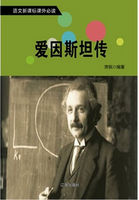Oily matter of some kind is met with in most plants. It is found in various parts of the plant but, as a rule, is most abundant in the fruit and seeds. The reason is obvious if we think of the work which the seeds have to do. In every case the little embryo plant feeds upon the store of food laid up in the seed till the germinating period is over, and it is able to seek its own living from the soil. The oily matter found in certain seeds is simply a peculiar form of that plant-food. Cotton, rape, colza, castor, and poppy oils are among those obtained from the seeds of plants, and linseed and hemp-seed oils, as their names indicate, belong to the same class.
Palm oil, cocoa-nut oil, and olive oil are all obtained from the fruits of their respective trees.
If an ordinary almond is held in the flame of the spirit- lamp, it will afford a good illustration of these oily nuts and seeds. It takes fire readily, and burns with a flame. It contains 46 percent of its weight in oil, and it is the oil that burns.
Most oils are extracted by pressure, and are known as cold-drawn oils-that is to say, they are obtained withoutheating. Some can only be obtained with the help of heat as well as pressure, and some, again, have to be distilled from the substances which contain them.
There are two classes of these vegetable oils; they will be best understood after a little experiment. Take two pieces of clean white blotting-paper, and let fall on one a drop of some common oil, such as olive, colza, or castor; on the other a similar quantity of oil of peppermint.
Wave the papers about in the air gently, and the oil of peppermint will gradually disappear from the one, leaving neither mark, nor stain, nor trace of any kind, while the other will bear a widely-spreading greasy stain, and the whole of the oil will remain on it.
In the one case we have an oil which disappears by flying off into the air; we call it a volatile oil. The word volatile comes from a Latin word meaning to fly. Among these volatile oils are oil of turpentine, lemon, cloves, lavender, bergamot, rosemary, and peppermint.
The other oil remained as a greasy stain on the paper, and made no attempt to fly off. This we call a fixed oil. Oil of linseed, hemp, cotton, rape, colza, castor, poppy, olive, palm, and coconut all belong to the class of fixed oils.
Each of these vegetable oils is useful in its own particular way, and because of its own distinctive properties.
Linseed oil is the product of the flax plant. It is a curious fact in connection with this plant that, although it grows equally well in warm as in temperate climates, there is agreat difference in the respective products. In temperate climates it is cultivated specially for its linen-producing stalks, the seeds and their oil being a very secondary consideration. In warm climates the stalks never reach robust growth, and the main objects of culture are the oil- yielding seeds.
These seeds contain one-fourth their weight of oil, which is obtained by pressure between closely-fitting iron rollers. The crushed seeds themselves are pressed into oil- cake, and make a valuable food for cattle, usually finding ready sales.
Linseed oil is largely used in the preparation of paint and putty, because it has the property of drying very rapidly when exposed to the air in thin layers.
Hemp and poppy oils are obtained in the same way, possess the same drying properties, and are applied to the same uses as linseed oil.
Rape and colza oils are obtained from the seeds of the cole or rape plant, a member of the cabbage tribe, which is grown largely in India and Southern Europe. The seeds contain 40 per cent of their weight in oil, which is obtained by pressure.
All oils are very inflammable, but rape and colza are the best of all vegetable oils in this respect. They are used in lamps, and give a bright luminous flame, without charring the wick. Best colza oil is employed in the lamps of lighthouses.
These oils have none of the drying properties of linseed and other oils, and would be unsuitable for the purposes to which they are applied; neither would linseed oil be suitable for lamps.
Castor oil is obtained by pressure from the seeds of a plant, originally a native of India, but now grown in America and the south of Europe. In those parts of the world it attains the height of 20 feet. We may sometimes see it growing in the north, but it is a comparatively small plant there, not reaching more than 3 feet in height. The seeds are about the size and shape of a bean, and contain a large quantity of thick oil, of a very nauseous odor and taste. We use castor oil as a medicine, but in India it is abundant, and so cheap that it is used for burning in lamps.
The seeds of the cotton plant yield much oil, which is obtained by pressure. Cotton oil is plentiful and cheap, but it lacks the qualities of most of the other oils. It is often used, because it is cheap, as an inferior substitute both for the lighting and the drying oils. It is also largely used for making soap, and for lubricating machinery, and in cooking, as a substitute for olive oil.















